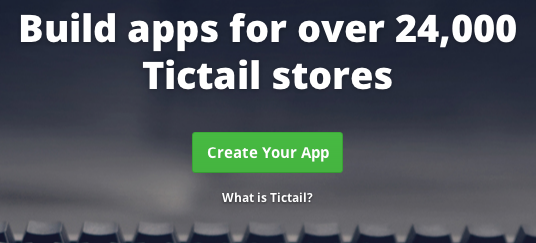Tictail, a Swedish e-commerce platform that manages over 24,000 stores spread across 110 different countries, launched their API on September 16, 2013. Because Tictail’s main focus is simplicity of use, they decided to offer developers the same tools they use internally to build this new platform. According to Carl Waldekranz, Tictail CEO, they “want developers to have that same opportunity as [the company] continues to grow internationally.”
Their developer platform includes the API but also their open application store, which is where all the action is for companies that want to make money selling apps. The whole project took them 3 months to carry out and everything is being managed without any external tools. Siavash Ghorbani, Tictail CTO, explains that “helping app developers quickly understand and seamlessly be able to conform to [their] design patterns” was fundamental to launch the right API. They’ve chosen proven standards starting with the authentication protocol which is OAuth 2.0. One of the features that made them choose it was the implicit grant flow because it allows any browser application to bypass the authorization code step, improving the app efficiency and responsiveness.
Most companies understand the importance of user experience consumer services by now, but somehow a lot of them don’t understand or simply ignore it when it comes to developers who consume their API. — Siavash Ghorbani, Tictail CTO
Launching an API with a special attention to User Experience offers many advantages, like having “developers recommend it instead of beating their head on the keyboard”, according to Ghorbani. In the end, for Tictail “the user experience of working with [their] API is just as important as it is in the product.” Tictail will continue to improve their API, which is now in Beta. Their main goal now was to launch it so they could gather feedback from developers and measure how applications developed on the new platform will be used by their growing community. Overall, Tictail’s move is an interesting one at this point in time when most companies are trying to attract more developers by launching open APIs. They were able to do it the right way from the start without consuming that many resources.
Please join in the discussion on this article over on Hacker News and reddit.




What interests me is this “they decided to offer developers the same tools they use internally to build this new platform”. Do they really mean exactly the same tools? Was it that their internal API was already suitable for external consumption. Seems like a happy accident. And now their internal and external APIs are tightly coupled, will development continue to remain agile.
I think this is a great strategy: aligning their internal product to their API makes both improve a lot more over time.
I do understand your concern that product development might suffer from using the same API that users are consuming but, if your number one priority is offering users the best possible experience, that shouldn’t be an issue.